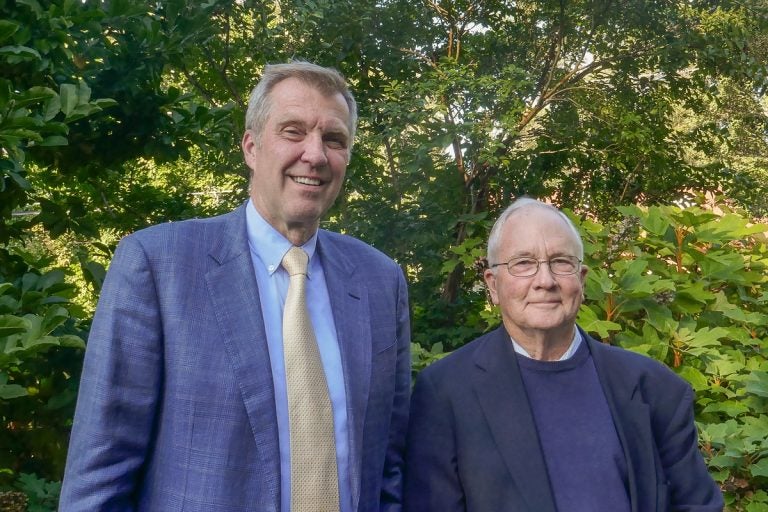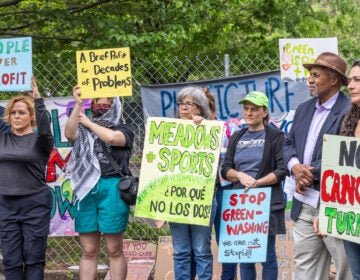The Philly tree? Yes, it's a thing — and there's a guide for that.
A new resource helps nature lovers reach a greater understanding of the trees that line streets, parks, and other spaces in Philadelphia and its neighboring areas.
Listen 0:00
Paul Meyer, director of the Morris Arboretum, (left) and Edward "Ned" Sibley Barnard (right) authored "Philadelphia Trees" along with Catriona Bull Briger. (Pauline Gray)
A new resource is available to help nature lovers reach a greater understanding of the trees that line streets, parks, and other spaces in Philadelphia and the region.
“Philadelphia Trees: A Field Guide to the City and the Surrounding Delaware Valley,” published this year by Columbia University Press, is handy for quickly identifying trees as well as pinpointing the best places to see trees unique to Philadelphia.
Written and illustrated by Paul Meyer, Catriona Bull Briger, and Edward “Ned” Sibley Barnard, “Philadelphia Trees” is one of those books you can slip into a backpack and refer to when trying to tell the difference between yews and hemlocks or hickories and yellowwoods.
Meyer, the director of Morris Arboretum in Chestnut Hill for 26 years, said his organization’s mission to get kids and adults out and in touch with nature rolls in nicely with the book.
Recently, along the arboretum’s Canopy Walk (an ADA standard wooden path exhibit that rises above the ground to provide a bird’s-eye view of a vast and varied tree canopy), Meyer said the path’s interpretive plaques and waysides for tree viewing make this point, “That we need trees, and trees need us.” Not only are they beautiful, they provide oxygen, shading, and watershed protection.
“In our communities, trees need our help. We need to plant them, water and nourish them, and prune and protect them as they mature,” Meyer wrote in the book’s introduction.
Sibley Barnard has written dozens of natural history books including “New York City Trees” and “Central Park Trees and Landscapes.” He is most impressed with Philly’s designated “great trees,” which are exceptional in size, age, form, and historical importance.
“Philadelphia has an incredibly remarkable group of specifically older trees. I can walk down my street and see five big trees that, if they were in New York City, would be numbered among the 100 great trees in New York City,” Sibley Barnard said. “Here, they’re just ordinary. Hardly anybody takes a second look. The place is filled with spectacular trees that are over 150 years old.”
The field guide describes 50 parks, botanical gardens, arboreta, and preserves in and around Philly. Its tree guide includes natives and exotics. A useful list of sources and resources directs readers to botanical websites and other reading materials.
Listen above to hear Meyer and Sibley Barnard talk with Morning Edition host Jennifer Lynn about what constitutes a Philadelphia tree.
WHYY is your source for fact-based, in-depth journalism and information. As a nonprofit organization, we rely on financial support from readers like you. Please give today.





